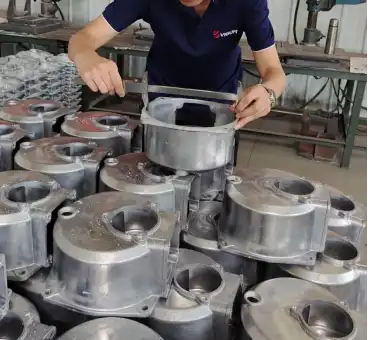
Knowledge
Overview of Metal Die Casting

Definition and Historical Background
Metal die casting, often referred to simply as die casting, is a casting process that involves injecting molten metal at high pressure into a precision metal mold cavity and allowing it to solidify under pressure to form a casting. This process, characterized by its high speed and pressure, enables the production of metal parts with complex shapes and thin cross-sections. The history of die casting can be traced back to the 19th century. In 1838, the first die casting equipment was invented for manufacturing molds for letterpress printing. The first patent related to die casting was issued in 1849 for a small manual machine used to produce lead type for printing presses. In 1885, Otto Mergenthaler invented the Linotype typesetting machine, which could cast an entire line of text as a single piece of type, revolutionizing the printing industry. At the beginning of the 20th century, with the rapid development of industry, die casting technology began to be widely used in the automotive, aerospace, and other industrial sectors for the production of various complex metal parts.
Brief Introduction to the Process Flow
The die-casting process mainly includes the following steps:
Mold Preparation: Before die-casting, the mold needs to be cleaned and lubricated to ensure that the casting can be smoothly demolded and to control the mold temperature.
Metal Melting: Select the appropriate metal alloy, such as aluminum, zinc, magnesium, etc., and melt it in the furnace to the appropriate temperature.
Metal Injection: The molten metal is injected into the mold cavity through the die-casting machine. This process can be completed in a few seconds, and the pressure can reach several megapascals to tens of megapascals.
Cooling and Solidification: The molten metal rapidly cools and solidifies in the mold to form the required casting shape.
Knockout and Post-treatment: After the casting solidifies, the mold is opened, and the casting is removed. Then, post-treatment work such as removing excess material, grinding, and cleaning is carried out.
Inspection and Correction: The casting is inspected for quality. If any defects are found, they are corrected to ensure that the casting meets the design and performance requirements.
Die-casting can achieve high-efficiency production, is suitable for mass manufacturing, and the castings have high dimensional accuracy and good surface quality. Therefore, it is widely used in automotive parts, electronic device housings, mechanical parts, and many other fields.
Vigor team have rich experience on die-castings. If any question or any demands we can help, please feel free to contact us at info@castings-forging.com



